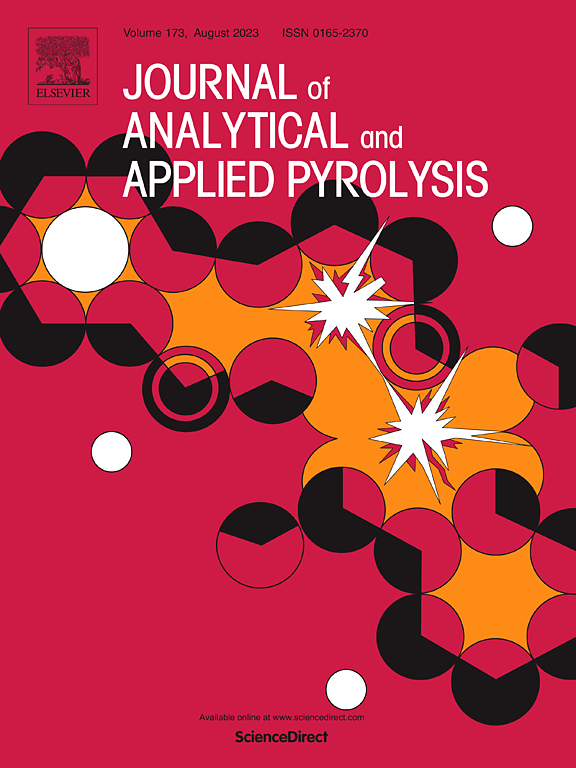Studies on the changes in the characteristics of co-pyrolysis products of discarded car tires with cotton and polyester textile waste
IF 5.8
2区 化学
Q1 CHEMISTRY, ANALYTICAL
引用次数: 0
Abstract
Efforts are underway in the European Union to reduce waste generation and introduce a circular economy. On 1 January 2025, separate collection of textile waste was introduced. Discarded textiles can be used as fuel, but this solution is limited because the combustion plant must meet technological requirements and emission standards. Another option is the pyrolysis process. It is classified as a recovery method and is ranked higher than the combustion process in the waste management hierarchy. A promising opportunity is the co-pyrolysis of discarded textiles with used car tires in operating plants.
The effect of the addition of cotton and polyester to car tires on the properties of co-pyrolysis products were investigated. The addition of textiles led to a decrease in char yield and a significant decrease in oil yield, along with an increase in the volume of gases released. The yields of by-products in the form of water fraction and deposits increased with the addition of both cotton and polyester. The addition of textiles resulted in an improvement in the quality of chars as fuel (a decrease in the ash and sulfur content and an increase in the calorific value), but the sorption properties deteriorated. Textile addition caused a decrease in the calorific value of the oil, but a decrease in the sulfur content was also observed. The calorific value of the gaseous products also decreased significantly. The benefit of using cotton was the introduction of biogenic carbon into products, which can contribute to reducing carbon dioxide emissions.
废弃汽车轮胎与棉、涤纶纺织废料共热解产物特性变化研究
欧盟正在努力减少废物的产生,并引入循环经济。从2025年1月1日起,开始对纺织废料进行分类收集。废弃的纺织品可以用作燃料,但这种解决方案是有限的,因为燃烧工厂必须满足技术要求和排放标准。另一种选择是热解过程。它被归类为一种回收方法,在废物管理等级中排名高于燃烧过程。一个很有前途的机会是在运营工厂中将废弃纺织品与二手汽车轮胎共热解。研究了汽车轮胎中添加棉花和聚酯对共热解产物性能的影响。纺织品的加入导致炭产率下降,油产率显著下降,同时释放的气体体积增加。棉和聚酯的加入增加了水馏分和沉淀物形式的副产物收率。纺织品的加入改善了作为燃料的焦炭的质量(减少了灰分和硫含量,增加了热值),但吸附性能变差了。纺织品的加入降低了油的热值,但也降低了硫含量。气态产物的热值也显著降低。使用棉花的好处是在产品中引入了生物碳,这有助于减少二氧化碳的排放。
本文章由计算机程序翻译,如有差异,请以英文原文为准。
求助全文
约1分钟内获得全文
求助全文
来源期刊
CiteScore
9.10
自引率
11.70%
发文量
340
审稿时长
44 days
期刊介绍:
The Journal of Analytical and Applied Pyrolysis (JAAP) is devoted to the publication of papers dealing with innovative applications of pyrolysis processes, the characterization of products related to pyrolysis reactions, and investigations of reaction mechanism. To be considered by JAAP, a manuscript should present significant progress in these topics. The novelty must be satisfactorily argued in the cover letter. A manuscript with a cover letter to the editor not addressing the novelty is likely to be rejected without review.

 求助内容:
求助内容: 应助结果提醒方式:
应助结果提醒方式:


